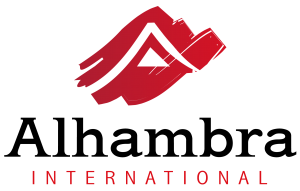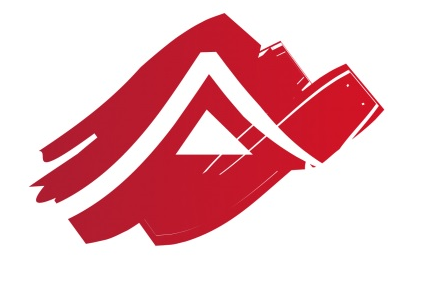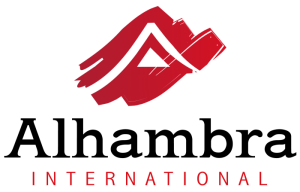 It’s necessary for us to adapt the recruiting methods in regards to the economic development which is facing important changes with the development of innovation, the weight of technology and the digital developments, the financial pressure which becomes ever stronger… ; all these different factors influencing the war for talents.
It’s necessary for us to adapt the recruiting methods in regards to the economic development which is facing important changes with the development of innovation, the weight of technology and the digital developments, the financial pressure which becomes ever stronger… ; all these different factors influencing the war for talents.
The recruiting steps follow each other and are based on an analysis of the position, the identification of candidates via multiple digital sources which are available today, the contact with the candidate and the presentation of the proposed position, the selection of the candidate(s) and the follow up of the recruitment process at the final customer.
In most cases, the different identification and contact steps with the candidate are being executed by research specialists who organize interviews for the consultants who are managing the selection process and the follow up of the recruiting process.
In IT, the Agile Manifesto is a text written in 2001 by Software Development experts who thought that the traditional development process (« in cascades ») did not correspond any more to the needs and constraints of rapidly changing organizations.
The agile methods emphasize 4 fundamental values:
– The individuals and their interactions are more important than the processes and the tools
– Operational software is more important than an elaborate documentation
– The cooperation with the customers is more important than contract negotiations
– Adaption to change is more important than sticking to an elaborated plan
Let’s apply these values to a specific recruitment, for example to an end customer who is an industrial equipment manufacturer and who has an open position as Supply Chain Project Manager:
– The recruitment specialists and consultants analyze together the specificities of the position, in order to extract key competence groups (industrial logistics, industrial performance, continuous improvement, planning …), key functionalities (Logistics Manager, performance as Project Manager, Area Manager, Set up Project Manager…) and target companies in which these key competences / functions exist (Industrial equipment manufacturers, supply chain consulting companies, heavy industry manufacturers, logistic companies…). The recruiting specialists are dividing up among each other the best research methods (CV libraries, University directories, linkedin…) and bring to the consultants the needed information in order to contact the candidates with a maximum of information on them.
– The candidates are rapidly being contacted; the exchanges of the consultants with the candidates allow detecting new areas of competences (5S, TPM, Lean …). This information is transferred by the consultants to the research specialists who align their search according to this new information. After a week, the first candidates are being interviewed (face to face) and the consultants exchange with the client. The consultants give to the client a visibility of the competences of the so far qualified candidates, of the job positioning after a first panel of candidates and of the new discovered criteria. The detailed report showing the research methods and the associated results are not a big priority any more. A weekly synthesis is enough to keep the client informed.
– The client forms an integral part in real time of the recruiting process. The client takes into account the information given by the consultants and provides precisions which in turn redirect again the new identification process (Kaizen more than Six sigma, more « industrial equipment company » more than « manufacturer »,).
– Accepting the change: The recruiting team has to be flexible in order to allow the client’s demands to evolve and to change during the whole process. New parameters can appear during the recruiting process: Modification of the hierarchical attachment of the candidate, functional competences which become priorities (e.g. the Kaizen competence is a priority over other criteria), salary variation (e.g. a bonus variable is added to the basic salary), even an evolution of the organization (e.g. as the client acquires a new company abroad, the candidate now has also to interact with international teams…)
These 4 values are declined in 12 general principals of an « Agile » recruiting which is an adaptation of the agile method development principals:
1. Satisfying the client by supplying quickly and regularly the best qualified candidates
2. Change is accepted, even when relatively late in the process, as the « agile » recruiting process runs the change as a competitive advantage for the customer
3. The candidate’s presentation to the client follows a precise selection, unapplied by default, in average by two week notice
4. The team of the consultants and the research specialists have to cooperate regularly and by preference daily during the process
5. The project has to involve motivated persons : «Give them the necessary environment and support, and trust these persons regarding their goals»
6. The most effective method for informing each member of the recruiting team is a face to face conversation which favors interactivity rather than information exchanged by email
7. The measurement unit of the recruiting process is the selected candidate (which excludes the counting of contacted, not interested or not retained candidates)
8. The agile process promotes a tenable identification and contact establishment rhythm (in order to avoid a lack of quality due to a lack of attention).
9. The agile process recommends a high degree of attention to excellence regarding contacts with the candidates and the quality of the interviews
10. The simplicity and the art of minimizing the parasite tasks are applied as essential principals: start targeting the candidates in “standby“, then contact the candidates who are the easiest ones to be contacted and afterwards change the research tool when it appears to be inappropriate
11. The teams organize themselves in order to bring to the foreground the best identification solutions, contacts’ techniques and candidate selection methods
12. In regular intervals, the team reflects about the ways to become more effective, than refines and adjusts its work process in consequence
As stated before in software development : « a method qualified agile has to be composed of a set of practices which are part of the frame described by the general agile principals and which in consequence respect the four fundamental values which have inspired the Agile Manifesto ».
In the last months, the recruiting debate has centered on the digital dimension, with the new technologies associated to this phenomenon, it is today necessary to complete it by a methodological approach which allows enhancing the quality and the performance of recruiting.
Anne Charlotte VAILLANT
Founder/Manager Alhambra Executive Search.



